






1999
EZHI AND PETRUCCIO
EZHI AND PETRUCCIO
1999–2002
Time of contradiction. Longing for recognition. Authorities depose. Mimesis of authorities. Dance theater. Search for original choreographic language. Eagerness to learn everything and from everybody, at once.
Time of contradiction. Longing for recognition. Authorities depose. Mimesis of authorities. Dance theater. Search for original choreographic language. Eagerness to learn everything and from everybody, at once.
Choreography and performance: Taras Burnashev, Evgeniya Kozlova (replaced by Daria Buzovkina, Irina Dolgolenko), Alexandra Konnikova, Alberts Alberts.
The role of Mother performed by Lyuda Raketa, Elena Golovasheva.
Soundtrack: Album Ezhi and Petruccio. Tales (texts by Andrey Andrianov, music by Andrey Dergachev).
Set design and costumes: Taras Burnashev.
Our friends Andrey and Pafnutiy (Andrey Dergachev) had released their first album Ezhi and Petruccio. At the moment, no one thought that the project would have a very bright future while we just felt it was killing and wanted to join. Taras suggested we dance it. Andrey and Pafnutiy had no objection. We paired up, chose the tales and started to create different duets of Ezhi and Petruccio. Our common choice was to search for simple associated choreographic images, calm neutral presence. The duets and collective scenes formed choreographic composition in which fairytale naivety intertwined with archaic depth. And, yes, the performance became quite a hit in the Russian dance community
The role of Mother performed by Lyuda Raketa, Elena Golovasheva.
Soundtrack: Album Ezhi and Petruccio. Tales (texts by Andrey Andrianov, music by Andrey Dergachev).
Set design and costumes: Taras Burnashev.
Our friends Andrey and Pafnutiy (Andrey Dergachev) had released their first album Ezhi and Petruccio. At the moment, no one thought that the project would have a very bright future while we just felt it was killing and wanted to join. Taras suggested we dance it. Andrey and Pafnutiy had no objection. We paired up, chose the tales and started to create different duets of Ezhi and Petruccio. Our common choice was to search for simple associated choreographic images, calm neutral presence. The duets and collective scenes formed choreographic composition in which fairytale naivety intertwined with archaic depth. And, yes, the performance became quite a hit in the Russian dance community

1999
LETING ONESELF
LETING ONESELF
Choreographed and performed by Alberts Alberts, Alexandra Konnikova, Elena Golovasheva, Evgeniya Kozlova (replaced by Irina Gontovaya, Irina Dolgolenko).
With participation of black rabbit Hare.
Music mixed and conceived by Nick Artamonov.
Costumes by Taras Burnashev.
With the support of Goethe-Institut Russland for Walpurgis Night project as a part of Pushkin-Goethe Festival.
After several years of studying improvisation at Gennadiy Abramov's Class of Expressive Plastic Movement and working with Sasha Waltz in Germany, we yearned to start making our own mistakes. At the very moment, Goethe-Institut commissioned us a piece for the special project at Pushkin-Goethe Festival and granted us 500 marks of production fund.
Being restricted by the subject of the proposed project, we brought all the wildness we could allow ourselves at the moment into it. Due to the list of the participants our story unwittingly occured to resemble the plot of the film The Witches of Eastwick. Still the most radical task in the process was to fix all the movements and actions within a choreographic piece and perform it neatly. That step was of a great importance to us and we agreed to torture each other in order to get the desired quality.
The piece was shown on the 30th of April at The Moscow Young Generation Theater. It had got quite a resonance inside the dance community followed by proposal from Sasha Pepelyaev to participate in Saint-Denis's festival platform in Yekaterinburg.
With participation of black rabbit Hare.
Music mixed and conceived by Nick Artamonov.
Costumes by Taras Burnashev.
With the support of Goethe-Institut Russland for Walpurgis Night project as a part of Pushkin-Goethe Festival.
After several years of studying improvisation at Gennadiy Abramov's Class of Expressive Plastic Movement and working with Sasha Waltz in Germany, we yearned to start making our own mistakes. At the very moment, Goethe-Institut commissioned us a piece for the special project at Pushkin-Goethe Festival and granted us 500 marks of production fund.
Being restricted by the subject of the proposed project, we brought all the wildness we could allow ourselves at the moment into it. Due to the list of the participants our story unwittingly occured to resemble the plot of the film The Witches of Eastwick. Still the most radical task in the process was to fix all the movements and actions within a choreographic piece and perform it neatly. That step was of a great importance to us and we agreed to torture each other in order to get the desired quality.
The piece was shown on the 30th of April at The Moscow Young Generation Theater. It had got quite a resonance inside the dance community followed by proposal from Sasha Pepelyaev to participate in Saint-Denis's festival platform in Yekaterinburg.

2000
FAR FAR AWAY
FAR FAR AWAY
Choreographed and performed by Alexandra Konnikova, Elena Golovasheva (replaced by Larisa Alexandrova), Taras Burnashev, Alberts Alberts, Irina Dolgolenko (replaced by Emmanuel Gorda).
Sound design by Taras Burnashev, Nick Artamonov.
Costumes by Taras Burnashev.
This piece started with the performance that we made as to say accidentally at the International Meeting for Choreographers and Dancers "Incontro" in Lisbon. Having departed from the mood we had there, we started to make a new piece. Still in genre of dance theater. It is composed of impulsive solos, dramatic duets with open endings and formally synchronized collective scenes. We expanded the image of transparent casings on the relationship between characters and further developed it in the costumes and set design. We made translucent mannequins by literally scotching ourselves [Alexandra and Alberts]. In the final scene of the piece there used to switch on a red bulb in the place where heart supposed to be.
Sound design by Taras Burnashev, Nick Artamonov.
Costumes by Taras Burnashev.
This piece started with the performance that we made as to say accidentally at the International Meeting for Choreographers and Dancers "Incontro" in Lisbon. Having departed from the mood we had there, we started to make a new piece. Still in genre of dance theater. It is composed of impulsive solos, dramatic duets with open endings and formally synchronized collective scenes. We expanded the image of transparent casings on the relationship between characters and further developed it in the costumes and set design. We made translucent mannequins by literally scotching ourselves [Alexandra and Alberts]. In the final scene of the piece there used to switch on a red bulb in the place where heart supposed to be.

2000
GOOSE-GRASS
GOOSE-GRASS
Choreography and performance: Alberts Alberts, Evgeniya Kozlova (replaced by Daria Buzovkina), Alexandra Konnikova, Taras Burnashev, Elena Golovasheva.
Sound design: Taras Burnashev.
Costumes: Taras Burnashev.
Video: Yana Aksenova.
Producer: Zurab Svanidze.
We continued to learn the rules of dance theater, acquire new dance techniques and tried to combine all that with the methods of work that we absorbed while at The Class of Expressive Plastic Movement.
Goose-Grass started with an idea of a group of friends living in a small village near the road. Each of them has a dream to leave for the big city and an image of oneself living different life. Still no one leaves — either being scared by the unknown, or because of the devotion to the place they live in. It was an abstract place that we built and rebuilt from 26 cardboard boxes. Our characters' lives did not contain realistic violence, we were more attracted to the romantics, philosophical point of view and play. The female trio of friends, finding out that they have bought the same dresses, turned out to be bankable
Sound design: Taras Burnashev.
Costumes: Taras Burnashev.
Video: Yana Aksenova.
Producer: Zurab Svanidze.
We continued to learn the rules of dance theater, acquire new dance techniques and tried to combine all that with the methods of work that we absorbed while at The Class of Expressive Plastic Movement.
Goose-Grass started with an idea of a group of friends living in a small village near the road. Each of them has a dream to leave for the big city and an image of oneself living different life. Still no one leaves — either being scared by the unknown, or because of the devotion to the place they live in. It was an abstract place that we built and rebuilt from 26 cardboard boxes. Our characters' lives did not contain realistic violence, we were more attracted to the romantics, philosophical point of view and play. The female trio of friends, finding out that they have bought the same dresses, turned out to be bankable

2001
BEADS
BEADS
Conceived by Taras Burnashev.
Choreographed and performed by Emmanuel Gorda, Alexandra Konnikova, Alberts Alberts, Vladimir Sturov, Taras Burnashev.
Music by Dmitry Subochev.
Costumes by Taras Burnashev.
Thank you to Alexander Pepelyaev.
Beads is a dreaming of Slavic pagan rituals. In the creation process, we mixed workshop principle — bodily research via specific states and group practices — with the development of images. All the material was transformed into a choreographic composition. This piece was intended to be shown at the first Dance Theaters Festival TSEKH on the Theater of Nations stage. We aimed at the large space not only with our choreography for six dancers. Set design included flexible perches each 3 meters long, large sacks and 80 kilograms of oats, pouring down from the fly gallery along the proscenium in the final scene of the performance.
Due to the scale, we performed the piece only once. There were no further opportunities for showing the piece or rehearsing it, and as of later two of the team members left for personal circumstances.
Choreographed and performed by Emmanuel Gorda, Alexandra Konnikova, Alberts Alberts, Vladimir Sturov, Taras Burnashev.
Music by Dmitry Subochev.
Costumes by Taras Burnashev.
Thank you to Alexander Pepelyaev.
Beads is a dreaming of Slavic pagan rituals. In the creation process, we mixed workshop principle — bodily research via specific states and group practices — with the development of images. All the material was transformed into a choreographic composition. This piece was intended to be shown at the first Dance Theaters Festival TSEKH on the Theater of Nations stage. We aimed at the large space not only with our choreography for six dancers. Set design included flexible perches each 3 meters long, large sacks and 80 kilograms of oats, pouring down from the fly gallery along the proscenium in the final scene of the performance.
Due to the scale, we performed the piece only once. There were no further opportunities for showing the piece or rehearsing it, and as of later two of the team members left for personal circumstances.

Choreography and performance: Taras Burnashev, Emmanuel Gorda, Alberts Alberts, Alexandra Konnikova.
Composer: Richardas Norvila.
Excerpts from the songs Tenderness, Poor heart, Mystery, Dark night are used in the performance.
We were inspired by the idea of choosing and dancing the favorite song. Not contemporary, but from some other period of time. Our interest lied in immersion into that period through that song and thus understanding what exactly comes forward inside when hearing that song. Moreover, why at all do songs provoke such deep emotional and bodily response? Every one of us chose a song form 30s-50s and worked deliberately on choreography. We put our characters into a communal life situation. There were opportunities for seclusion as well as for unexpected group gatherings. Richardas transformed the chosen songs beyond recognition to accompany our solos. That new, alienated sound as if let you hear the way songs sounded inside our bodies and the way the songs left them.
Composer: Richardas Norvila.
Excerpts from the songs Tenderness, Poor heart, Mystery, Dark night are used in the performance.
We were inspired by the idea of choosing and dancing the favorite song. Not contemporary, but from some other period of time. Our interest lied in immersion into that period through that song and thus understanding what exactly comes forward inside when hearing that song. Moreover, why at all do songs provoke such deep emotional and bodily response? Every one of us chose a song form 30s-50s and worked deliberately on choreography. We put our characters into a communal life situation. There were opportunities for seclusion as well as for unexpected group gatherings. Richardas transformed the chosen songs beyond recognition to accompany our solos. That new, alienated sound as if let you hear the way songs sounded inside our bodies and the way the songs left them.
2002
BODY LEAVES
BODY LEAVES

2003–2007
Asking ourselves "What and how do we want to dance?" Dance theater and performance art. Testing of the boundaries of our artistic freedom: every new work has to be not alike the previous one.
Asking ourselves "What and how do we want to dance?" Dance theater and performance art. Testing of the boundaries of our artistic freedom: every new work has to be not alike the previous one.

2003
&
&

Choreography: Alexandra Konnikova, Alberts Alberts, Emmanuel Gorda.
Performance: Alberts Alberts, Alexandra Konnikova.
Composer: Richardas Norvila.
Set design: Vadim Koptievsky.
Costumes: Natalia Milenina.
With the support of Moscow City Culture Committee.
Being granted with the production funds from Moscow City Culture Committee, we decided to share it with Taras [Burnashev] and thus create two separate pieces. We were not able to find suitable time in our schedules – we worked on a project in Germany, Taras wanted to start working on the piece at the beginning of the season, and our artistic interests diverged at the moment.
Aiming at large duet piece, for the first time we really wondered "How and about what do we want to dance?" Being caught in the dance theater rules, we made a story about last people on Earth at the edge of doom. They set forth, visit new places and go through different human states and stages of their lives once again.
Performance: Alberts Alberts, Alexandra Konnikova.
Composer: Richardas Norvila.
Set design: Vadim Koptievsky.
Costumes: Natalia Milenina.
With the support of Moscow City Culture Committee.
Being granted with the production funds from Moscow City Culture Committee, we decided to share it with Taras [Burnashev] and thus create two separate pieces. We were not able to find suitable time in our schedules – we worked on a project in Germany, Taras wanted to start working on the piece at the beginning of the season, and our artistic interests diverged at the moment.
Aiming at large duet piece, for the first time we really wondered "How and about what do we want to dance?" Being caught in the dance theater rules, we made a story about last people on Earth at the edge of doom. They set forth, visit new places and go through different human states and stages of their lives once again.
2005
3petiX
3petiX
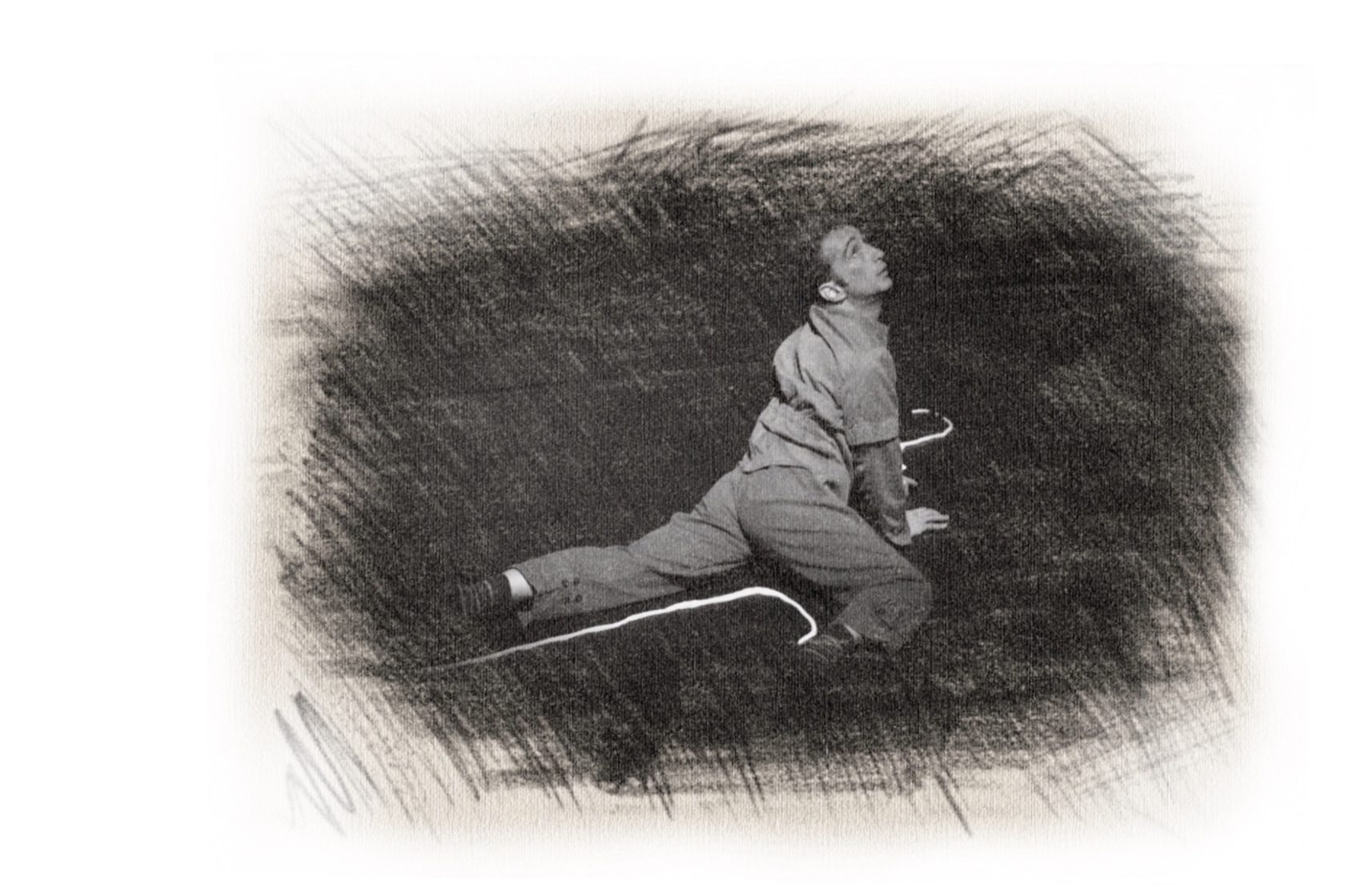
Choreography and performance: Alberts Alberts, Alexandra Konnikova.
As Passerby: Ilya Malkin, Stanislav Klimushkin, Brad Aldous, Nail Ibragimov, Vadim Koptievsky.
Composer: Richardas Norvila.
This piece was grounded in the urgency, each of us felt, to assert ourselves independently as a dancer and a performer. The occasion arose with the dance solos competition somewhere in Germany. We helped each other with the solos, and sent one of them as work-in-progress, while we had never sent the other one. We performed our solos Key and Wow, wow, what a joyful day at TSEKH Festival in 2004 together with the solo by Emmanuel Gorda, and thus we had got a triptych by Po.V.S.Tanze Dance Company.
While working in Kenya, making a piece with the local dancers, we quite often were under stress, rare moments of feeling relaxed provided our imagination with new resources. We decided to combine our solos and create the third duet part that in a collage form included all the strange images and funny artifacts we dreamt and saw. That third part we called 'Paradise' – the only place for encounter of the protagonists of the first two parts of the 3petiX (three little unknown). The third protagonist, random passerby performing ludicrous dance of destruction, always changed as not so many festivals agreed to pay for the trip of three.
As Passerby: Ilya Malkin, Stanislav Klimushkin, Brad Aldous, Nail Ibragimov, Vadim Koptievsky.
Composer: Richardas Norvila.
This piece was grounded in the urgency, each of us felt, to assert ourselves independently as a dancer and a performer. The occasion arose with the dance solos competition somewhere in Germany. We helped each other with the solos, and sent one of them as work-in-progress, while we had never sent the other one. We performed our solos Key and Wow, wow, what a joyful day at TSEKH Festival in 2004 together with the solo by Emmanuel Gorda, and thus we had got a triptych by Po.V.S.Tanze Dance Company.
While working in Kenya, making a piece with the local dancers, we quite often were under stress, rare moments of feeling relaxed provided our imagination with new resources. We decided to combine our solos and create the third duet part that in a collage form included all the strange images and funny artifacts we dreamt and saw. That third part we called 'Paradise' – the only place for encounter of the protagonists of the first two parts of the 3petiX (three little unknown). The third protagonist, random passerby performing ludicrous dance of destruction, always changed as not so many festivals agreed to pay for the trip of three.
2006
ON HOLD
ON HOLD
Choreographed and performed by Alexandra Konnikova, Alberts Alberts, Emmanuel Gorda.
Set design conceived by Vadim Koptievsky, executed by Oleg Avdonin.
Thank you to Stanislav Klimushkin, Petr Nemoy, Presnyakov Brothers.
Excerpts from the films Oldboy by Park Chan-wook and The Seventh Seal by Ingmar Bergman are used in the performance.
With the support of Russian Dance Theaters Agency TSEKH.
The process started with the question, "How to overcome black box conventionalism while still staying on stage?" Together with Vadim we came up with idea to create even more conventional, more restrained, autonomous space for action. The space turned out to be utterly abstract. In search of poignancy, we put sensual choreography and a story of complicated relationship between the protagonists into it. Almost all movement material was found via authentic movement practice.
Set design conceived by Vadim Koptievsky, executed by Oleg Avdonin.
Thank you to Stanislav Klimushkin, Petr Nemoy, Presnyakov Brothers.
Excerpts from the films Oldboy by Park Chan-wook and The Seventh Seal by Ingmar Bergman are used in the performance.
With the support of Russian Dance Theaters Agency TSEKH.
The process started with the question, "How to overcome black box conventionalism while still staying on stage?" Together with Vadim we came up with idea to create even more conventional, more restrained, autonomous space for action. The space turned out to be utterly abstract. In search of poignancy, we put sensual choreography and a story of complicated relationship between the protagonists into it. Almost all movement material was found via authentic movement practice.
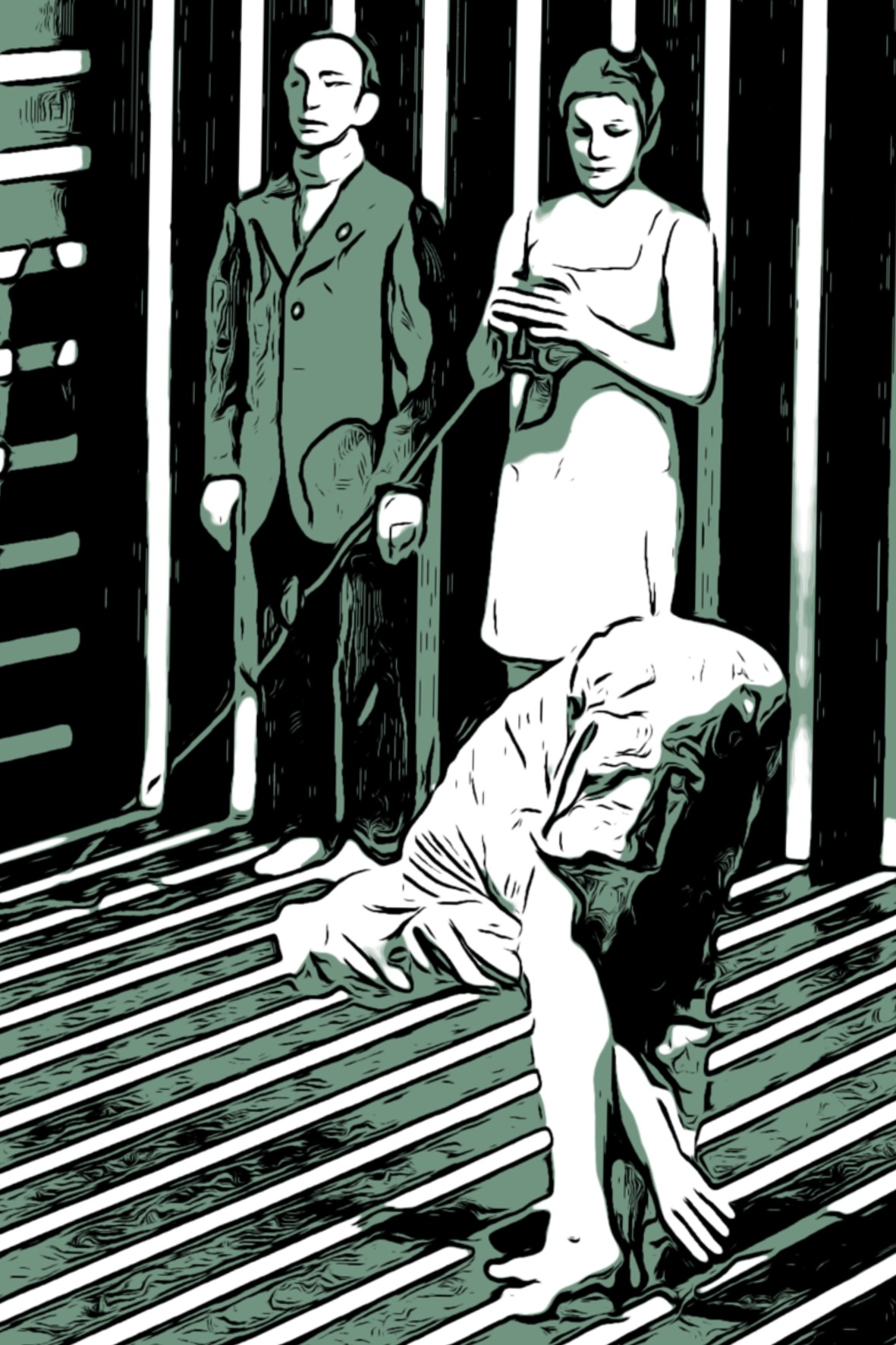
2007
OWEN AND MZEE*
OWEN AND MZEE*
Concept, choreography: Alberts Alberts, Alexandra Konnikova.
Performance: Alberts Alberts, Alexandra Konnikova, Stanislav Klimushkin, actors from Laboratory Teatrika and Sonya Levin.
Composers: Sasha Gusev, Arkady Marto, Valery Vasyukov, Richardas Norvila.
Costumes: Alberts Alberts, Alexandra Konnikova, Kristina Koshkina.
Set design: Vadim Koptievskiy, Alberts Alberts.
Video: Josh B Brayn.
With the support of Russian Dance Theaters Agency TSEKH.
This piece emerged as a response to the critique of the previous work. "It's a pity there is so little dance", — that was the feedback. So we decided to make a 10 minutes long performance in which we would just dance together to the igniting music as if at a nightclub. In order to support our ambition to call it a performance, we invited 12 people to create the environment for our dance. We presented that version at Diversia Festival. Half a year after it became 60 minutes long and consisted of five parts, different and self-sufficient in their language and form, united by the concept 'what lies between the two', building absurd and non-linear plot.
Performance: Alberts Alberts, Alexandra Konnikova, Stanislav Klimushkin, actors from Laboratory Teatrika and Sonya Levin.
Composers: Sasha Gusev, Arkady Marto, Valery Vasyukov, Richardas Norvila.
Costumes: Alberts Alberts, Alexandra Konnikova, Kristina Koshkina.
Set design: Vadim Koptievskiy, Alberts Alberts.
Video: Josh B Brayn.
With the support of Russian Dance Theaters Agency TSEKH.
This piece emerged as a response to the critique of the previous work. "It's a pity there is so little dance", — that was the feedback. So we decided to make a 10 minutes long performance in which we would just dance together to the igniting music as if at a nightclub. In order to support our ambition to call it a performance, we invited 12 people to create the environment for our dance. We presented that version at Diversia Festival. Half a year after it became 60 minutes long and consisted of five parts, different and self-sufficient in their language and form, united by the concept 'what lies between the two', building absurd and non-linear plot.
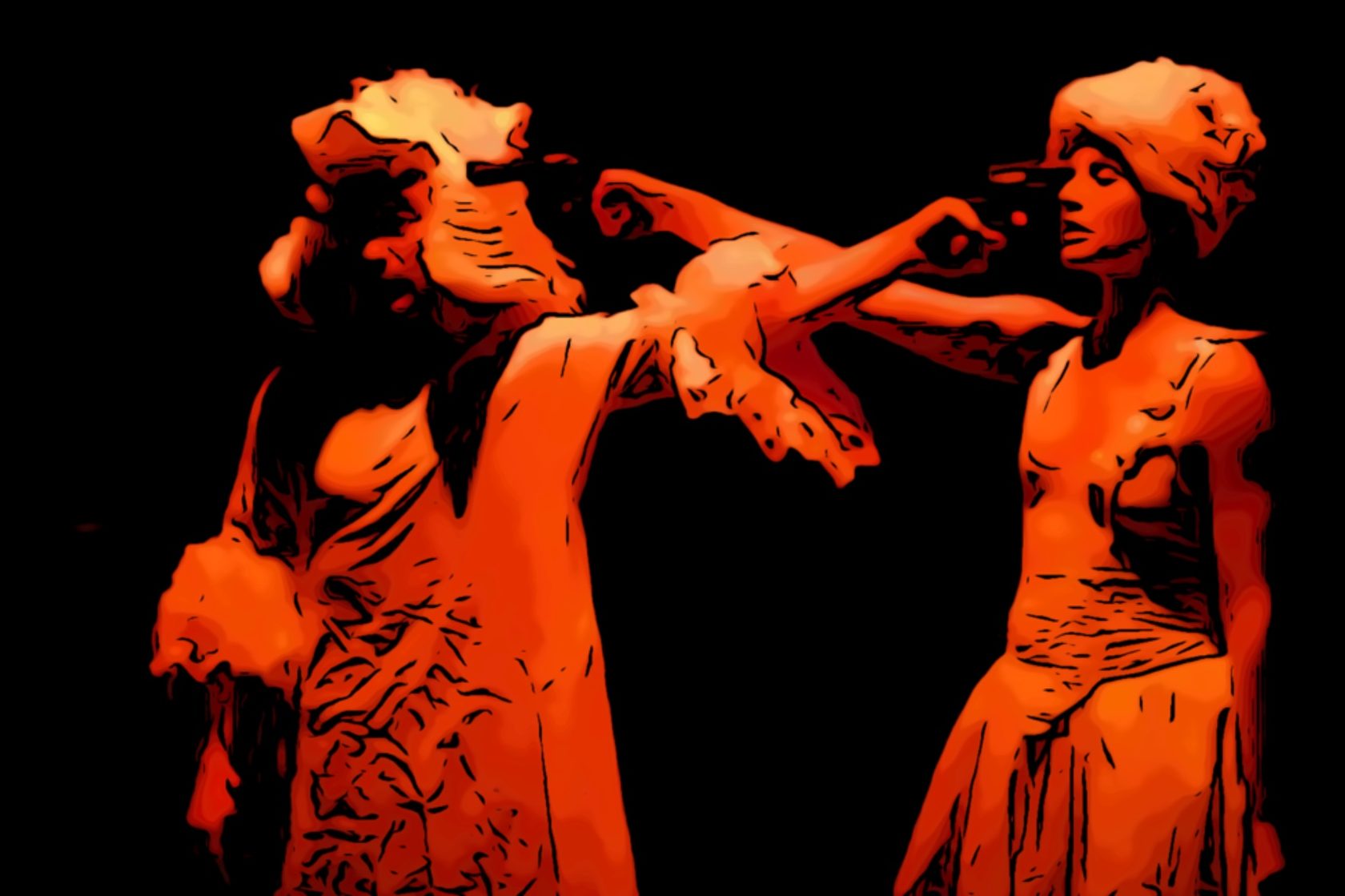
*Owen and Mzee are real animals whose story became a legend. Baby hippopotamus, saved by people, and old turtle became friends and completely inseparable. No one could explain that phenomena and those two became an amenity of one of the national parks in Africa.
2008–2013
Focus shift onto process and method. Encounter with audience – important part of the process, but not the goal. Dance performance. Ideas of the pieces are born out of communality of artistic interests and inner needs of members of the team. Search for dance and endeavor at understanding its relationship with other theatre and performance instruments.
Focus shift onto process and method. Encounter with audience – important part of the process, but not the goal. Dance performance. Ideas of the pieces are born out of communality of artistic interests and inner needs of members of the team. Search for dance and endeavor at understanding its relationship with other theatre and performance instruments.



2008
NIGHTS AND DAYS
NIGHTS AND DAYS
Choreography, performance, costumes: Alberts Alberts, Alexandra Konnikova.
Composer: Richardas Norvila.
Commissioned and supported by the International Contemporary Dance Festival Diversia.
Part of our practice was doing exercises from the book Psychophysical Method Exercises by Robert Masters. In particular, imagining the movement in all the details before actually doing it. In Nights And Days, there are phases of quietness when we imagine subsequent dance as detailed as possible. Next come the movement phases when we dance trying to keep the state of quietness.
During the rehearsals, we found out that, by doing those tasks, we feel time periods precisely up to a second and easily get to the aimed point in space on time without any additional cues. During the show, we realized that such a simple structure was provocative for the audience. At the same time, their confusion endorsed our concept. At the beginning of the piece, we lay on the floor for three minutes and we feel the wave of disturbance emerging in the heads of the viewers, during the third minute we hear fidgeting, coughing and murmuring. As soon as the dance begins, the audience become quiet and dive into meditation.
Composer: Richardas Norvila.
Commissioned and supported by the International Contemporary Dance Festival Diversia.
Part of our practice was doing exercises from the book Psychophysical Method Exercises by Robert Masters. In particular, imagining the movement in all the details before actually doing it. In Nights And Days, there are phases of quietness when we imagine subsequent dance as detailed as possible. Next come the movement phases when we dance trying to keep the state of quietness.
During the rehearsals, we found out that, by doing those tasks, we feel time periods precisely up to a second and easily get to the aimed point in space on time without any additional cues. During the show, we realized that such a simple structure was provocative for the audience. At the same time, their confusion endorsed our concept. At the beginning of the piece, we lay on the floor for three minutes and we feel the wave of disturbance emerging in the heads of the viewers, during the third minute we hear fidgeting, coughing and murmuring. As soon as the dance begins, the audience become quiet and dive into meditation.

2008
PROBABILITY PRACTICE
PROBABILITY PRACTICE
Choreography, performance: Alexandra Konnikova, Sonya Levin, Alberts Alberts, Alexander Andriyashkin, Ilya Belenkov.
Composer: Richardas Norvila.
Costumes: Ilya Belenkov.
With the support of Russian Dance Theaters Agency TSEKH.
The piece emerged out of the workshop, where we explored the moment of making choice, variability and predeterminacy implicit in movement. We gradually defined the principles of working with movement and attention and by following them created choreography for the first part of the performance. Choreography of the second part was much formed by the particularities of the moment, still the rules of systematic probability practice were created for it as well. With every step, we discovered more opportunities and strategies of interaction with the subject – in making dance composition, in random playing of music tracks and light scenes, their unpredictable combination with the action. The other question that inspired our group of perfectionists was 'Can the movements we execute and the space we are in stay clean and be of no influence by our perception, personal stories and reflections?' At the end of the performance, we got naked and danced movement variations that disappeared as soon as they emerged.
Composer: Richardas Norvila.
Costumes: Ilya Belenkov.
With the support of Russian Dance Theaters Agency TSEKH.
The piece emerged out of the workshop, where we explored the moment of making choice, variability and predeterminacy implicit in movement. We gradually defined the principles of working with movement and attention and by following them created choreography for the first part of the performance. Choreography of the second part was much formed by the particularities of the moment, still the rules of systematic probability practice were created for it as well. With every step, we discovered more opportunities and strategies of interaction with the subject – in making dance composition, in random playing of music tracks and light scenes, their unpredictable combination with the action. The other question that inspired our group of perfectionists was 'Can the movements we execute and the space we are in stay clean and be of no influence by our perception, personal stories and reflections?' At the end of the performance, we got naked and danced movement variations that disappeared as soon as they emerged.

2009
М23
М23
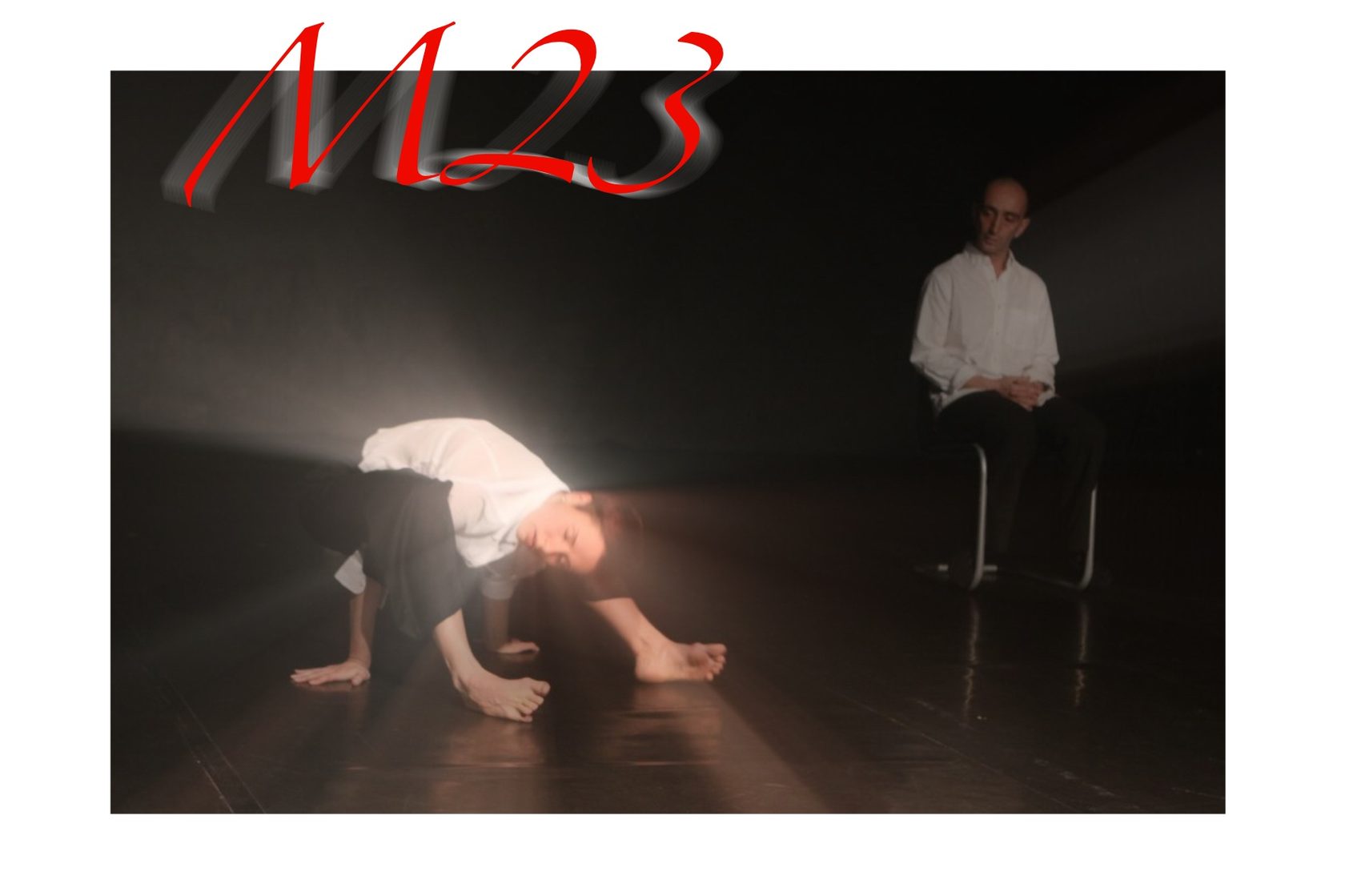
Concept, choreography, performance: Alberts Alberts, Alexandra Konnikova.
Composer: Richardas Norvila.
The performance consists of a few duets, where one of us watches the other's actions. We switch the roles. The actions are a dance emerged from the image implied the necessity of self-observation. We suggest the audience to observe the one who watches. Such a suggestion becomes straightforward when the one who acts goes behind the curtains and the audience can only see the one who watches the other staying on stage. But for most of the performance the audience have a chance to see the whole picture and perhaps start to observe themselves observing the one who observes self-observing. The idea of the performance emerged when we realized how interesting it is to watch someone watching, when we watched the pairs of actor-observer at one of our classes at TSEKH Summer School.
Composer: Richardas Norvila.
The performance consists of a few duets, where one of us watches the other's actions. We switch the roles. The actions are a dance emerged from the image implied the necessity of self-observation. We suggest the audience to observe the one who watches. Such a suggestion becomes straightforward when the one who acts goes behind the curtains and the audience can only see the one who watches the other staying on stage. But for most of the performance the audience have a chance to see the whole picture and perhaps start to observe themselves observing the one who observes self-observing. The idea of the performance emerged when we realized how interesting it is to watch someone watching, when we watched the pairs of actor-observer at one of our classes at TSEKH Summer School.
2009
TOUCH
TOUCH
Concept, performance: Alexandra Konnikova, Alberts Alberts, Alexander Andriyashkin, Ilya Belenkov, Emmanuel Gorda.
With participation of Mimosa pudica.
Composer: Richardas Norvila.
We were united by the interest in exploring touch and the idea that touch can be a resource of unique information beyond psychic reflections and patterns of social communication. We explored the possibility to touch without being emotionally involved, we let the information enter our bodies as something unknown and kinesthetic, turned it into forms of movement. We created situations where our dance could last only due to the touch of another or touching one. We wanted to show it to the audience without loosing uncertainty and fragility so precious to us. In order to protect ourselves and tune in the spectators, we created specific artistic frame – we walked the viewers into the space with their eyes closed, we set them in a circle, we changed our costumes from uniform to beach wear, we created the light design similar to the change of sunlight during the day with that change accelerated during the act to the very fast pace. At the very end as a bridge between the act and the following talk with the audience, we presented a plant named Mimosa pudica and its unique abilities – the leaves of the plant fold inwards when touched.
With participation of Mimosa pudica.
Composer: Richardas Norvila.
We were united by the interest in exploring touch and the idea that touch can be a resource of unique information beyond psychic reflections and patterns of social communication. We explored the possibility to touch without being emotionally involved, we let the information enter our bodies as something unknown and kinesthetic, turned it into forms of movement. We created situations where our dance could last only due to the touch of another or touching one. We wanted to show it to the audience without loosing uncertainty and fragility so precious to us. In order to protect ourselves and tune in the spectators, we created specific artistic frame – we walked the viewers into the space with their eyes closed, we set them in a circle, we changed our costumes from uniform to beach wear, we created the light design similar to the change of sunlight during the day with that change accelerated during the act to the very fast pace. At the very end as a bridge between the act and the following talk with the audience, we presented a plant named Mimosa pudica and its unique abilities – the leaves of the plant fold inwards when touched.
open workshop with audience participation
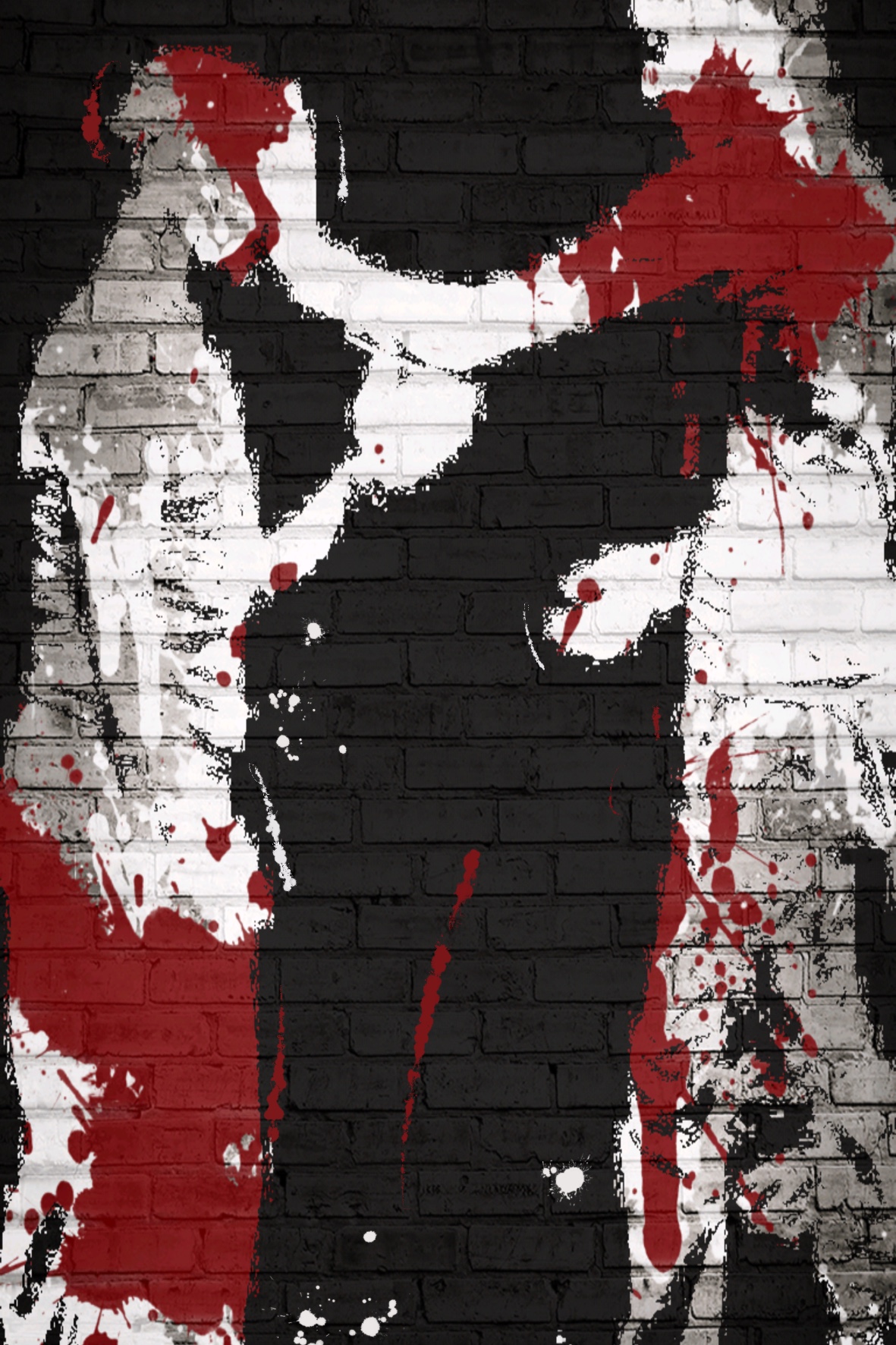
2010
OmMericom
OmMericom
Choreography, dramaturgy, performance: Alexandra Konnikova, Alberts Alberts.
Composer: Richardas Norvila.
Video: Alexandra Konnikova.
Set design: Vadim Koptievsky.
Within two years we visited true India several times and lived a month and a half in America. We were interested in figuring out those strong and ambiguous impressions via artistic work. In OmMericom we go on imaginary journey into other bodies and circumstances and come back to dive into the question of self-identification deeper than before.
Composer: Richardas Norvila.
Video: Alexandra Konnikova.
Set design: Vadim Koptievsky.
Within two years we visited true India several times and lived a month and a half in America. We were interested in figuring out those strong and ambiguous impressions via artistic work. In OmMericom we go on imaginary journey into other bodies and circumstances and come back to dive into the question of self-identification deeper than before.
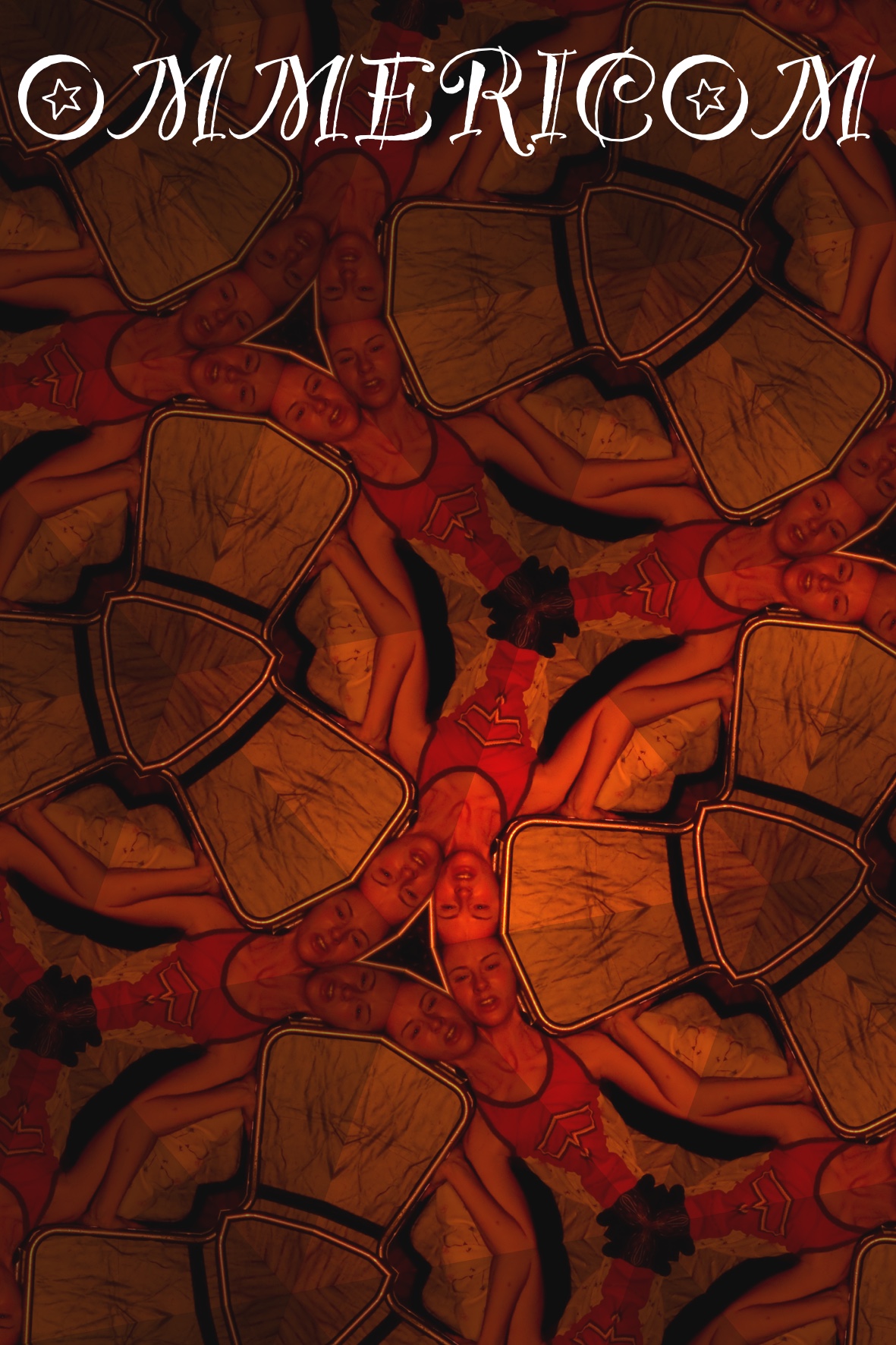
2011
MY FATHER RAMBO or FIBONACCI SPIRAL
MY FATHER RAMBO or FIBONACCI SPIRAL
Idea, choreography, performance: Alberts Alberts.
With the help of Alexandra Konnikova.
Dramaturgy: Alberts Alberts, Richardas Norvila, Alexandra Konnikova.
Composer: Richardas Norvila.
This performance is a self-permission to be serious, to be small, to be a clown, to be romantic, to be a Jew. Such permission becomes possible in the reflection process of the pressure exerted on me by the heroic authority and masculinity mythology.
Every rehearsal I redeveloped the structure, I never was able to perform the piece the way I wanted to. In the process, I made many discoveries but never gained liberation from being dependent.
With the help of Alexandra Konnikova.
Dramaturgy: Alberts Alberts, Richardas Norvila, Alexandra Konnikova.
Composer: Richardas Norvila.
This performance is a self-permission to be serious, to be small, to be a clown, to be romantic, to be a Jew. Such permission becomes possible in the reflection process of the pressure exerted on me by the heroic authority and masculinity mythology.
Every rehearsal I redeveloped the structure, I never was able to perform the piece the way I wanted to. In the process, I made many discoveries but never gained liberation from being dependent.
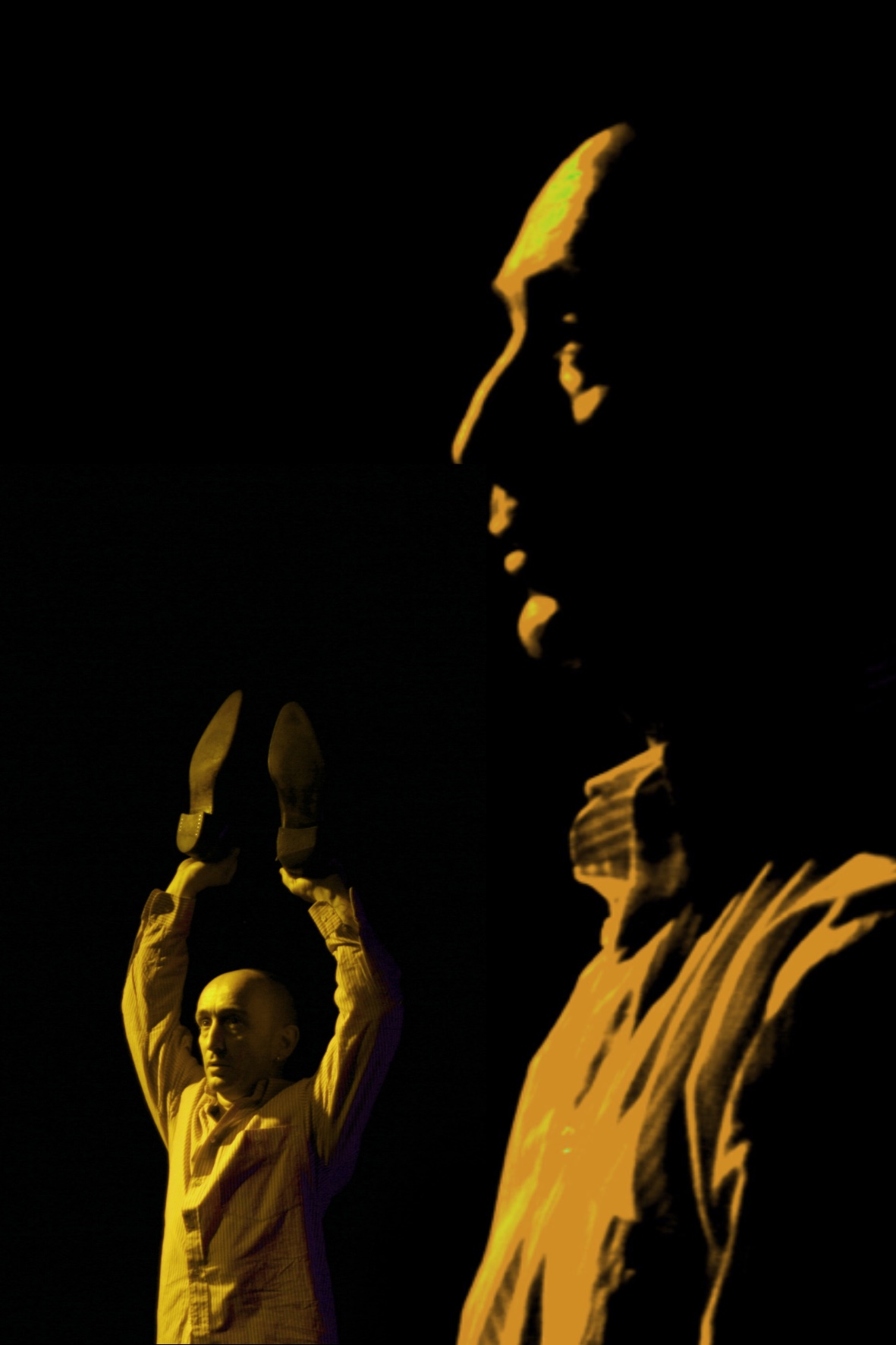
2011
DANCE LIVING IN ME
DANCE LIVING IN ME
Concept, performance: Alexandra Konnikova.
With the help of Alberts Alberts.
The performance emerged out of necessity to find my own definition of 'dance' and declare it at the current dance scene. That task made me create a manifest consisting of nearly 100 values that my dance did not not claim to. The dance that followed the manifest and emerged in real time aspired to the value I could name but left unnamed.
With the help of Alberts Alberts.
The performance emerged out of necessity to find my own definition of 'dance' and declare it at the current dance scene. That task made me create a manifest consisting of nearly 100 values that my dance did not not claim to. The dance that followed the manifest and emerged in real time aspired to the value I could name but left unnamed.
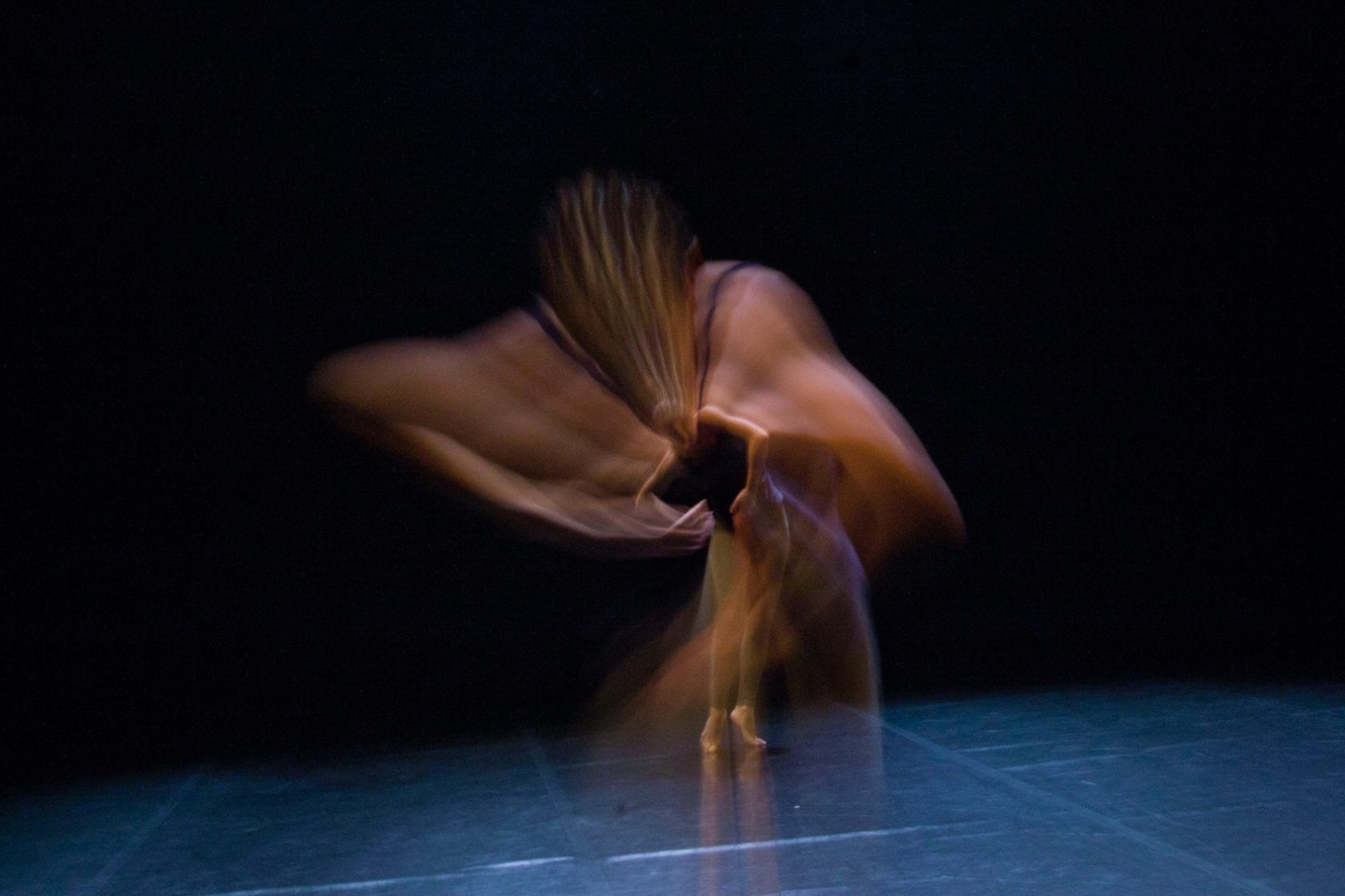


2012
SITCOM-PERFORMANCE "…"
SITCOM-PERFORMANCE "…"
Performance: Alexander Andriyashkin, Alexandra Konnikova, Alberts Alberts.
Music: Richardas Norvila.
Playlist: Richardas Norvila, Alexander Andriyashkin.
DJ and organizer: Natalya Krutilina.
Thank you to Vadim Koptievsky for designing the flyers.
Music: Richardas Norvila.
Playlist: Richardas Norvila, Alexander Andriyashkin.
DJ and organizer: Natalya Krutilina.
Thank you to Vadim Koptievsky for designing the flyers.
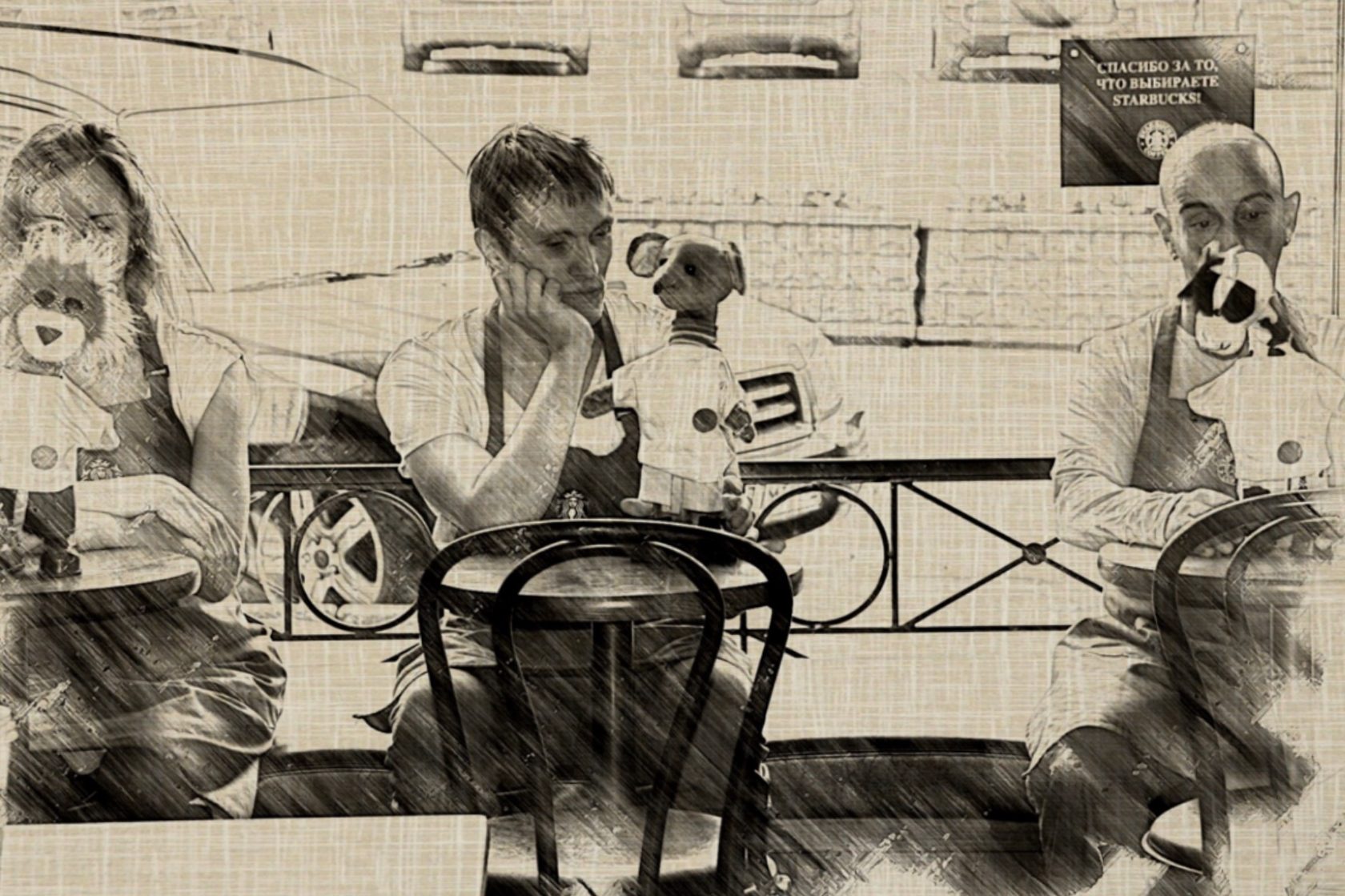
What is interest? How one can makes something interesting for oneself while being of interest to the spectator every now and then? These questions were suggested by Sasha Andriyashkin, we decided to take our chance, this project became a total break out of our comfort zone.
We created an improvised action, where we put contemporary dance and performance instruments inside the frame of sitcom. The frame and the rules agreed did not make the task easier but harder to perform, as they required fast and win-win decisions from us. We rehearsed a lot, but it didn't help us to gain confidence, we had always been near miss.
The first and the last time we performed the piece for 7 days at different venues: in Moskva book shop, in a flat, in the Museum of Soviet Arcade Machines, at summer cinema in Gorky Park, at NCCA (National Centre for Contemporary Arts), in Starbucks café, and at Moscow's Pushkin Drama Theatre (studio stage). We performed 21 episodes and put gigabytes of photo and video documentation into archive.
We created an improvised action, where we put contemporary dance and performance instruments inside the frame of sitcom. The frame and the rules agreed did not make the task easier but harder to perform, as they required fast and win-win decisions from us. We rehearsed a lot, but it didn't help us to gain confidence, we had always been near miss.
The first and the last time we performed the piece for 7 days at different venues: in Moskva book shop, in a flat, in the Museum of Soviet Arcade Machines, at summer cinema in Gorky Park, at NCCA (National Centre for Contemporary Arts), in Starbucks café, and at Moscow's Pushkin Drama Theatre (studio stage). We performed 21 episodes and put gigabytes of photo and video documentation into archive.
2013
ANTICIPATION/AFTERTASTE
/SONG
ANTICIPATION/AFTERTASTE
/SONG
Concept, choreography, performance: Alexandra Konnikova, Alberts Alberts.
Video: Alexandra Konnikova, Richardas Norvila.
Thank you to Konstantin Grouss.
With the support of International Culture Project 'Art-residence'.
Thinking of the nature of feeling anticipation and aftertaste we wanted to represent them in choreography through the quality of movement and rhythm. Song emerged out of desire to sing. Having chosen specific romance about unfulfilled we thus completed the tree part form with the irony on the events of the first two parts. Kostya Grouss helped us by providing space for rehearsals in some rooms at Povarskaya Street. When we realized that the space was perfect for the performance itself, together with Kostya we came with the idea of a festival of room dance and performance ROOM ROOM ROOM. We invited other choreographers and performers from Moscow and beyond and held the festival three times with great inspiration and success among the spectators.
Video: Alexandra Konnikova, Richardas Norvila.
Thank you to Konstantin Grouss.
With the support of International Culture Project 'Art-residence'.
Thinking of the nature of feeling anticipation and aftertaste we wanted to represent them in choreography through the quality of movement and rhythm. Song emerged out of desire to sing. Having chosen specific romance about unfulfilled we thus completed the tree part form with the irony on the events of the first two parts. Kostya Grouss helped us by providing space for rehearsals in some rooms at Povarskaya Street. When we realized that the space was perfect for the performance itself, together with Kostya we came with the idea of a festival of room dance and performance ROOM ROOM ROOM. We invited other choreographers and performers from Moscow and beyond and held the festival three times with great inspiration and success among the spectators.

2013
ROAD DIARY
ROAD DIARY
Idea, performance: Alexandra Konnikova.
With the help of Alberts Alberts.
Composer: Richardas Norvila — Technobrega Edit.
Light setup: Evgeniya Kaufman.
Going on a journey, I made a rule for keeping a diary — a challenge to stay creatively toned on holiday. My diary started to attract photo and video documentation and, half way already, I became assured to turn it into a performance. Gradually the work became a one-man show resembling a handmade patchwork quilt made of huge amount of actions, details, all types of artistic instruments and media available to the 'poor theatre'.
I think that the most explicit subjects of the piece became the following: journey as an instrument for self-reflection and transformation, comprehension of my artistic expression through word and movement throughout my life, since being five years old up to now.
With the help of Alberts Alberts.
Composer: Richardas Norvila — Technobrega Edit.
Light setup: Evgeniya Kaufman.
Going on a journey, I made a rule for keeping a diary — a challenge to stay creatively toned on holiday. My diary started to attract photo and video documentation and, half way already, I became assured to turn it into a performance. Gradually the work became a one-man show resembling a handmade patchwork quilt made of huge amount of actions, details, all types of artistic instruments and media available to the 'poor theatre'.
I think that the most explicit subjects of the piece became the following: journey as an instrument for self-reflection and transformation, comprehension of my artistic expression through word and movement throughout my life, since being five years old up to now.
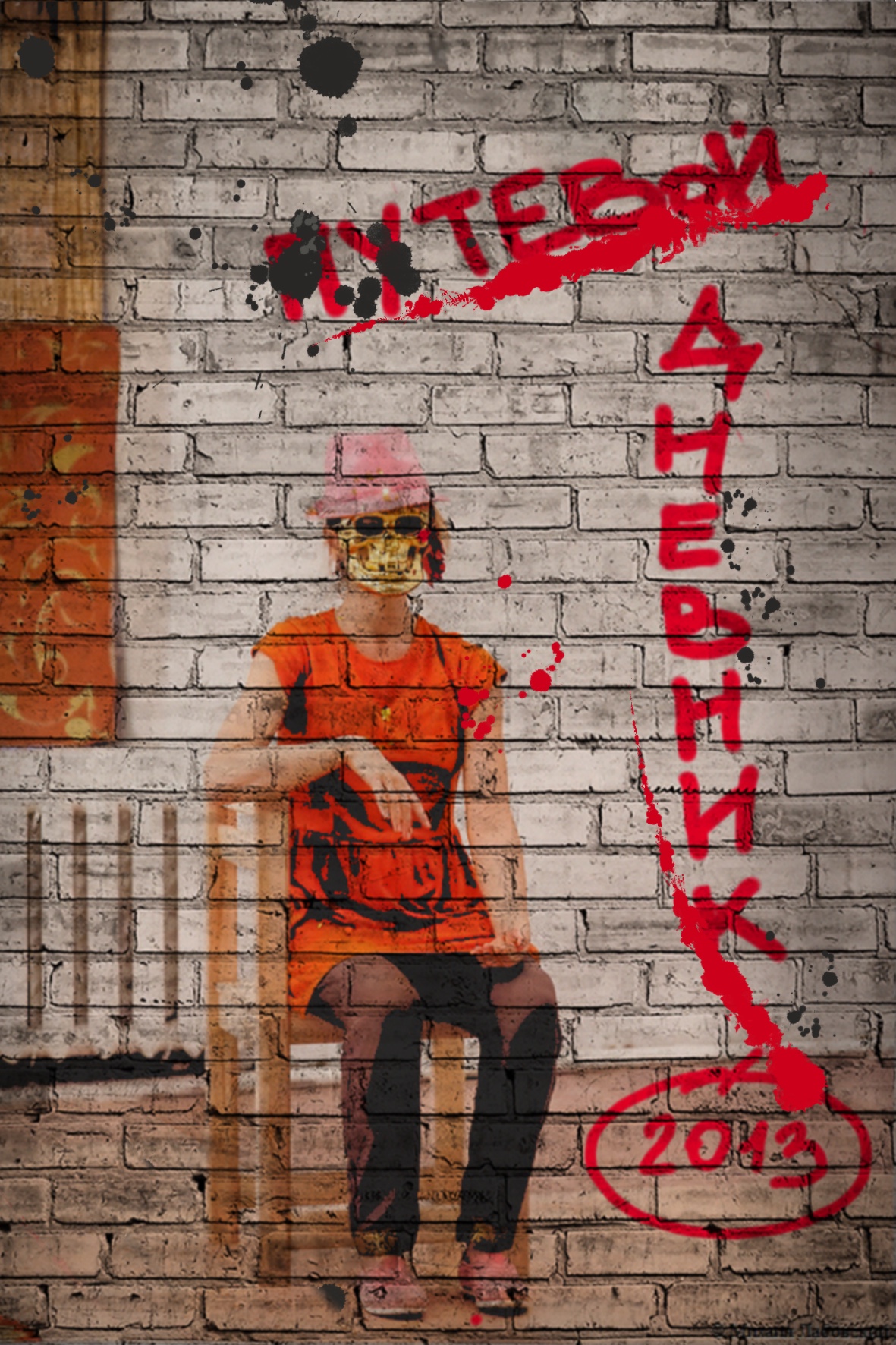
2013
SHUM ZO
SHUM ZO
Is there any sense to bring knowledge of interconnection between movement and breathing used in yoga and East Asian martial arts into dance? Or does the dance require different, more specific approach? Those questions together with my interest in ideokinesis encouraged me to bring together people interested in a workshop research. After a year of work, that team supported my intention to lead the process to the form of performance. At that stage we realized what we were doing as part of our practice had already been choreographic material itself. Additional dramaturgy and composition also emerged out of what we had already created. Another half a year we worked on a stage form of the piece and then performed it three times in different spaces and contexts.
In Shum Zo we were one organism and every member was essential and irreplaceable there. That was our accomplishment and at the same time it stopped the performance from living for long.
In Shum Zo we were one organism and every member was essential and irreplaceable there. That was our accomplishment and at the same time it stopped the performance from living for long.

Idea, workshop moderation, stage direction: Alexandra Konnikova.
Collaboration on workshop tasks development: Ilya Belenkov.
With the help (on staging) of Alberts Alberts.
Workshop participation, choreography, performance: Olga Vavilova, Anna Subbotina, Nina Kungurova, Natalya Krutilina, Olga Sytnik, Ilya Belenkov, Alberts Alberts, Alexandra Konnikova.
Composer: Richardas Norvila.
Costumes: Ilya Belenkov, with the help of Olga Sytnik.
Thank you to Natalya Krutilina for help with organizing the shows.
Collaboration on workshop tasks development: Ilya Belenkov.
With the help (on staging) of Alberts Alberts.
Workshop participation, choreography, performance: Olga Vavilova, Anna Subbotina, Nina Kungurova, Natalya Krutilina, Olga Sytnik, Ilya Belenkov, Alberts Alberts, Alexandra Konnikova.
Composer: Richardas Norvila.
Costumes: Ilya Belenkov, with the help of Olga Sytnik.
Thank you to Natalya Krutilina for help with organizing the shows.
How and why did we create each of our 26 pieces between 1999 and 2009?
The material was prepared for the 20th anniversary of the company in May 2019.
Visual design: Vadim Koptievsky.
Photos by Taras Burnashev, Anna van Kooji, Michail Labovsky, Natalia Krutilina, Vladimir Lupovskoy, Gleb Neupokoyev, Efim Erikhman, Maris Morkans, Sonya Levin and others (authorship not identified).
The material was prepared for the 20th anniversary of the company in May 2019.
Visual design: Vadim Koptievsky.
Photos by Taras Burnashev, Anna van Kooji, Michail Labovsky, Natalia Krutilina, Vladimir Lupovskoy, Gleb Neupokoyev, Efim Erikhman, Maris Morkans, Sonya Levin and others (authorship not identified).
HISTORY
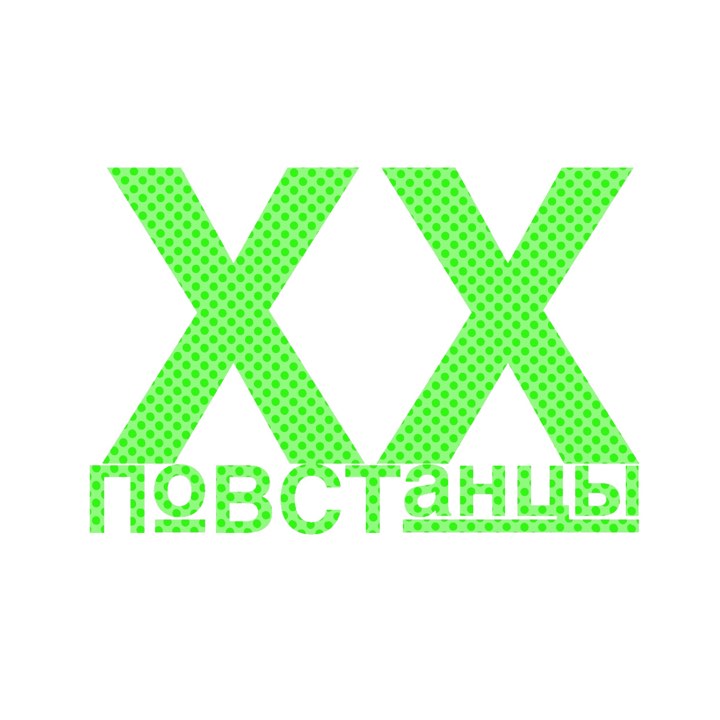


2014–2019
Размывание границ между жизненным творчеством и художественной практикой. Исследование действия. Утверждение в состоянии танца. Теперь все другие инструменты происходят из него и окрашены его свойствами. Размывание границ между театром, танцем и перформансом. Между хореографией и танцем. То, что мы делаем — это то, что мы делаем, и ничего более.
Размывание границ между жизненным творчеством и художественной практикой. Исследование действия. Утверждение в состоянии танца. Теперь все другие инструменты происходят из него и окрашены его свойствами. Размывание границ между театром, танцем и перформансом. Между хореографией и танцем. То, что мы делаем — это то, что мы делаем, и ничего более.

Концепция, исполнение: Албертс Альбертс, Александра Конникова
Музыка: альбом «Ахимса», композитор — Ричардас Норвила
Текст: диалог из фильма «Я стреляла в Энди Уорхола»
Свет: Евгения Кауфман, Максим Кирилловский
Мы обнаружили особое состояние танца, которое проникает в тело после дыхательных упражнений. Его сложно описать, но это похоже на примирение с собой, и это состояние хрупкое, оно тает и растворяется быстро или немного медленнее. Мы придумали цикличную структуру из трёх частей и правила, в которых нам бесконечно интересно. Дыхание — танец — текст. В этой игре текст, сам по себе и его фактическое содержание, становятся символом насилия. Для нас в момент исполнения фаза текста — это пространство, в котором мы говорим одними и теми же словами о бесконечном количестве вещей, вместе путешествуем в разные ситуации и исследуем энергию конфликта. Действие «Жуков» может продолжаться долго. Пока что, в зависимости от контекста и обстоятельств, оно длилось 10, 30 или 50 минут.
Музыка: альбом «Ахимса», композитор — Ричардас Норвила
Текст: диалог из фильма «Я стреляла в Энди Уорхола»
Свет: Евгения Кауфман, Максим Кирилловский
Мы обнаружили особое состояние танца, которое проникает в тело после дыхательных упражнений. Его сложно описать, но это похоже на примирение с собой, и это состояние хрупкое, оно тает и растворяется быстро или немного медленнее. Мы придумали цикличную структуру из трёх частей и правила, в которых нам бесконечно интересно. Дыхание — танец — текст. В этой игре текст, сам по себе и его фактическое содержание, становятся символом насилия. Для нас в момент исполнения фаза текста — это пространство, в котором мы говорим одними и теми же словами о бесконечном количестве вещей, вместе путешествуем в разные ситуации и исследуем энергию конфликта. Действие «Жуков» может продолжаться долго. Пока что, в зависимости от контекста и обстоятельств, оно длилось 10, 30 или 50 минут.
антивоенное действие
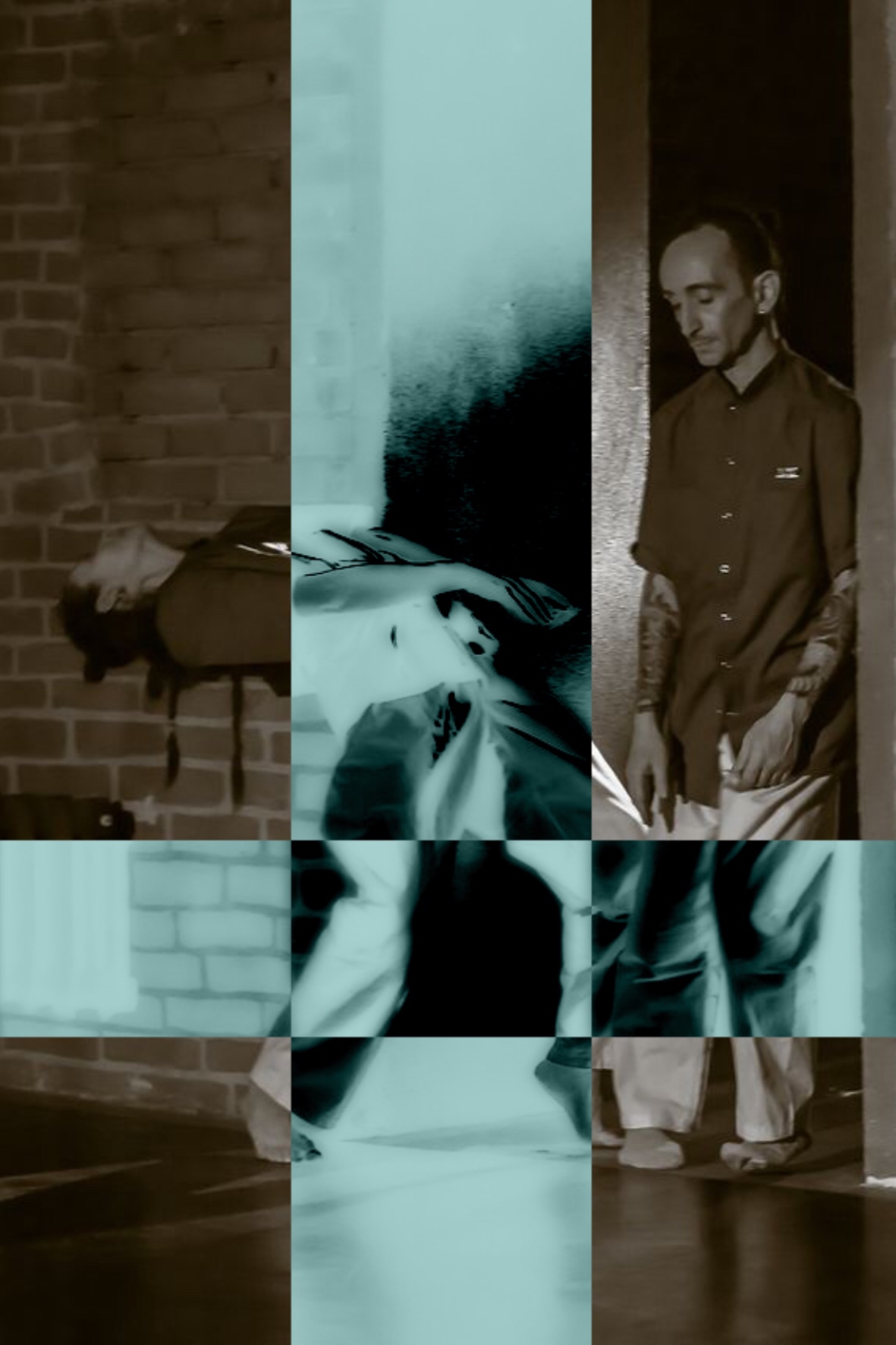
2014–2019
Размывание границ между жизненным творчеством и художественной практикой. Исследование действия. Утверждение в состоянии танца. Теперь все другие инструменты происходят из него и окрашены его свойствами. Размывание границ между театром, танцем и перформансом. Между хореографией и танцем. То, что мы делаем — это то, что мы делаем, и ничего более.
Размывание границ между жизненным творчеством и художественной практикой. Исследование действия. Утверждение в состоянии танца. Теперь все другие инструменты происходят из него и окрашены его свойствами. Размывание границ между театром, танцем и перформансом. Между хореографией и танцем. То, что мы делаем — это то, что мы делаем, и ничего более.

Концепция, исполнение: Албертс Альбертс, Александра Конникова
Музыка: альбом «Ахимса», композитор — Ричардас Норвила
Текст: диалог из фильма «Я стреляла в Энди Уорхола»
Свет: Евгения Кауфман, Максим Кирилловский
Мы обнаружили особое состояние танца, которое проникает в тело после дыхательных упражнений. Его сложно описать, но это похоже на примирение с собой, и это состояние хрупкое, оно тает и растворяется быстро или немного медленнее. Мы придумали цикличную структуру из трёх частей и правила, в которых нам бесконечно интересно. Дыхание — танец — текст. В этой игре текст, сам по себе и его фактическое содержание, становятся символом насилия. Для нас в момент исполнения фаза текста — это пространство, в котором мы говорим одними и теми же словами о бесконечном количестве вещей, вместе путешествуем в разные ситуации и исследуем энергию конфликта. Действие «Жуков» может продолжаться долго. Пока что, в зависимости от контекста и обстоятельств, оно длилось 10, 30 или 50 минут.
Музыка: альбом «Ахимса», композитор — Ричардас Норвила
Текст: диалог из фильма «Я стреляла в Энди Уорхола»
Свет: Евгения Кауфман, Максим Кирилловский
Мы обнаружили особое состояние танца, которое проникает в тело после дыхательных упражнений. Его сложно описать, но это похоже на примирение с собой, и это состояние хрупкое, оно тает и растворяется быстро или немного медленнее. Мы придумали цикличную структуру из трёх частей и правила, в которых нам бесконечно интересно. Дыхание — танец — текст. В этой игре текст, сам по себе и его фактическое содержание, становятся символом насилия. Для нас в момент исполнения фаза текста — это пространство, в котором мы говорим одними и теми же словами о бесконечном количестве вещей, вместе путешествуем в разные ситуации и исследуем энергию конфликта. Действие «Жуков» может продолжаться долго. Пока что, в зависимости от контекста и обстоятельств, оно длилось 10, 30 или 50 минут.
антивоенное действие

2014–2019
Diluting borders between life art and art practice. Research of action. Assertion in the state of dance. Now all the instruments emerge from dance and are influenced by its attributes. Diluting borders between theater, dance and performance. Between choreography and dance. What we do is what we do and nothing else.
Diluting borders between life art and art practice. Research of action. Assertion in the state of dance. Now all the instruments emerge from dance and are influenced by its attributes. Diluting borders between theater, dance and performance. Between choreography and dance. What we do is what we do and nothing else.
2015
BEETLES
BEETLES

Concept, performance: Alberts Alberts, Alexandra Konnikova.
Music: album Ahimsa by Richardas Norvila.
Text: dialogue from film I shot Andy Warhol.
Light design: Evgeniya Kaufman, Maxim Kirillovsky.
We discovered particular state of dance that enters the body after breathing exercises. It is hard to describe, it is something like reconciliation with oneself, and that state is fragile, it melts and dissolves more or less rapidly. We created a loop structure of three parts and rules that kept us constantly interested. Breath – dance – text. In the game text itself and its meaning become a symbol of violence. For us the text phase in the performance is a space where we speak about infinite amount of things using the same words, where we travel to different situations and explore the energy of conflict. The action Bugs can last for long. Up to now within different contexts and circumstances, it has lasted 10, 30 and 50 minutes.
Music: album Ahimsa by Richardas Norvila.
Text: dialogue from film I shot Andy Warhol.
Light design: Evgeniya Kaufman, Maxim Kirillovsky.
We discovered particular state of dance that enters the body after breathing exercises. It is hard to describe, it is something like reconciliation with oneself, and that state is fragile, it melts and dissolves more or less rapidly. We created a loop structure of three parts and rules that kept us constantly interested. Breath – dance – text. In the game text itself and its meaning become a symbol of violence. For us the text phase in the performance is a space where we speak about infinite amount of things using the same words, where we travel to different situations and explore the energy of conflict. The action Bugs can last for long. Up to now within different contexts and circumstances, it has lasted 10, 30 and 50 minutes.
anti-war action
2015
BLOOD
BLOOD

Dramaturgy, choreography, performance: Alexandra Konnikova, Alberts Alberts, Alina Mikhaylova.
Composer: Richardas Norvila.
Light design: Evgeniya Kaufman, Maxim Kirillovsky.
Video: Alexandra Konnikova, Richardas Norvila.
Сalligraphy: Alberts Alberts.
Thank you to Vadim Koptievskiy for help.
Special thanks to Natasha Klementyeva for help with laboratory blood sampling.
With the support of The Union of Theatre Workers of the Russian Federation (STD).
Is it possible to hear the voice of blood through bodily respond to the authentic music of our ancestors' peoples? Four generations from the mother's side and three generations from the father's side, we are bound genetically and karmically. Richardas suggested the way to choose the music. He also told us he had a device that could create electromagnetic pulses out of our blood samples and he had an idea how to make music out of it. Alina became part of this project because her blood is different although she is our soul mate: we move in parallel and always ready to meet. We dived into music, memory, what we knew and didn't know about our ancestors, we cried and laughed at rehearsals and created the performance within 9 days.
Composer: Richardas Norvila.
Light design: Evgeniya Kaufman, Maxim Kirillovsky.
Video: Alexandra Konnikova, Richardas Norvila.
Сalligraphy: Alberts Alberts.
Thank you to Vadim Koptievskiy for help.
Special thanks to Natasha Klementyeva for help with laboratory blood sampling.
With the support of The Union of Theatre Workers of the Russian Federation (STD).
Is it possible to hear the voice of blood through bodily respond to the authentic music of our ancestors' peoples? Four generations from the mother's side and three generations from the father's side, we are bound genetically and karmically. Richardas suggested the way to choose the music. He also told us he had a device that could create electromagnetic pulses out of our blood samples and he had an idea how to make music out of it. Alina became part of this project because her blood is different although she is our soul mate: we move in parallel and always ready to meet. We dived into music, memory, what we knew and didn't know about our ancestors, we cried and laughed at rehearsals and created the performance within 9 days.

Performers and authors: Alberts Alberts, Alexandra Konnikova, Andrey Andrianov.
Music director: Richardas Norvila.
Texts: Andrey Andrianov, Alexandra Konnikova.
Light design: Evgeniya Kaufman.
Thank you to Vadim Koptievsky for designing poster and flyers.
Thank you to Richardas Norvila for help with concept development.
With the support of The Union of Theatre Workers of the Russian Federation (STD)
The Ark started with the desire to make something together once again and emerged instantly due to the chance. We have known Andrey for more than 25 years. We have a lot of friends and stories in common and more and more common views on life, dance and theater. We realized that the weight of that commonality allows us to choose material with ease. When the structure revealed itself, we found out that all the meanings are strung on one thread. "Of course, that's how it was conceived!" The only question was by whom? Every rehearsal unintentionally started and ended with a philosophical conversation. That is how we are going on every time we go back to The Ark to refresh it.
Music director: Richardas Norvila.
Texts: Andrey Andrianov, Alexandra Konnikova.
Light design: Evgeniya Kaufman.
Thank you to Vadim Koptievsky for designing poster and flyers.
Thank you to Richardas Norvila for help with concept development.
With the support of The Union of Theatre Workers of the Russian Federation (STD)
The Ark started with the desire to make something together once again and emerged instantly due to the chance. We have known Andrey for more than 25 years. We have a lot of friends and stories in common and more and more common views on life, dance and theater. We realized that the weight of that commonality allows us to choose material with ease. When the structure revealed itself, we found out that all the meanings are strung on one thread. "Of course, that's how it was conceived!" The only question was by whom? Every rehearsal unintentionally started and ended with a philosophical conversation. That is how we are going on every time we go back to The Ark to refresh it.
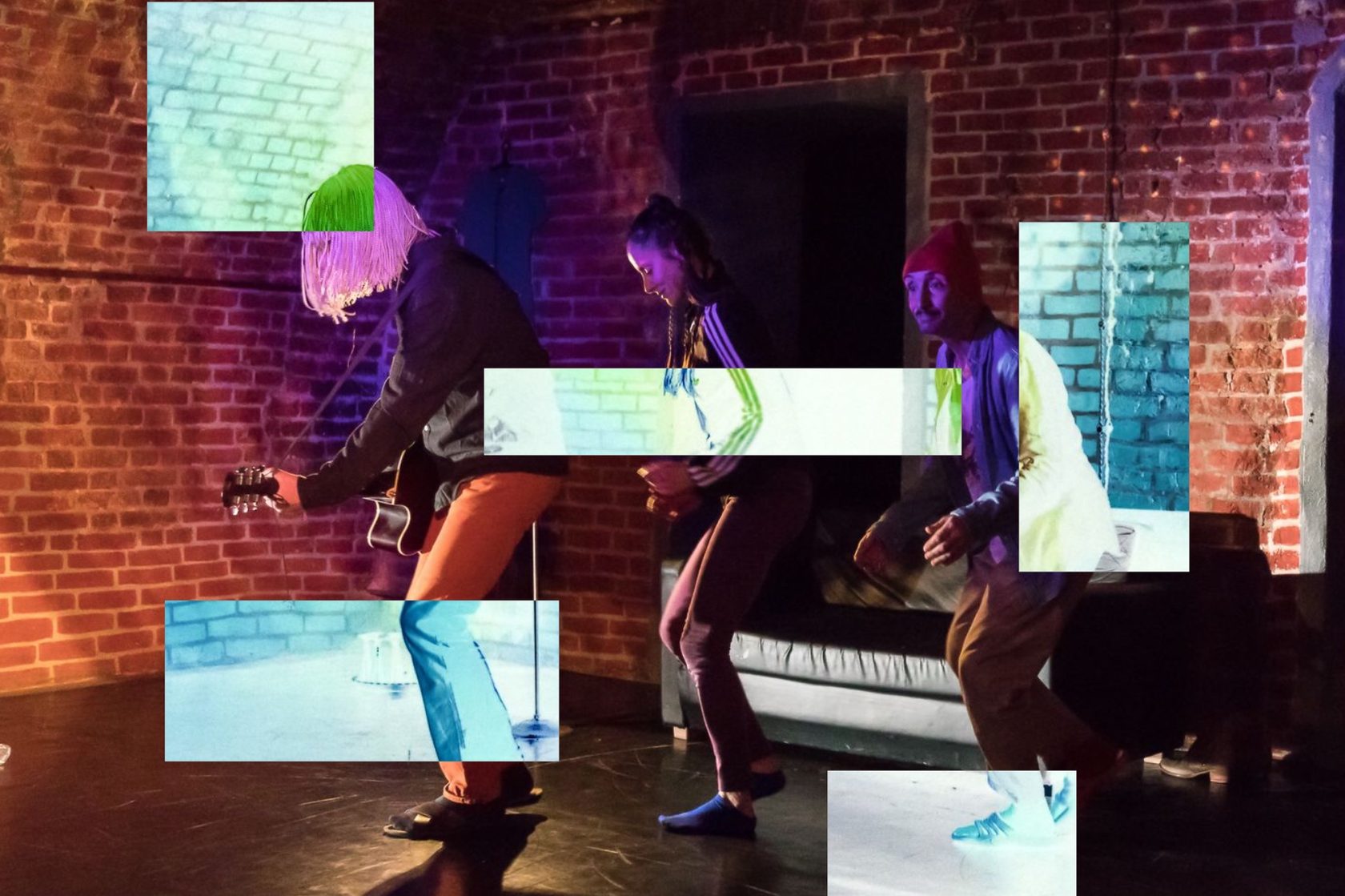
2017
Po.V.S.Tanze & Andrey Andrianov
THE ARK
Po.V.S.Tanze & Andrey Andrianov
THE ARK
in one part for three performers
2017
WE'VE BEEN HERE
WE'VE BEEN HERE
Concept, performance: Alberts Alberts and Alexandra Konnikova.
Light design: Evgeniya Kaufman.
Set design: Vadim Koptievsky.
Composer: Richardas Norvila, music performed by The New Oslo Losers Trio (Norway).
Also performed in the play the song 'Love Hurts' by The Everly Brothers.
Excerpts from the short story The Chamber of the Statues by J.L. Borges and the poem Autumn by A.S. Pushkin are used in the performance.
In this piece we continue to dilute the borders between art practice and life art. Part of the events that we call 'dramaturgical puzzles' are our everyday actions considered as artistic, the other part are our artistic statements reflecting our deeply personal attitude to the artistic task at the moment. The score of the piece is defined by chance for every show and never repeats itself. Every element morphs and uncover itself anew depending on the sequence and relationship with other elements. It is interesting to observe how this play creates connections and meanings impossible to imagine. We fall into the fissure between determinacy and actual living. We get to the point where known and unknown turn into each other.
"itinerary is a fate map
destination is a destiny
draw every time anew
to leave a trace
anew
for entertainment"
translated from Tamil, unknown author, 2nd century BC
Light design: Evgeniya Kaufman.
Set design: Vadim Koptievsky.
Composer: Richardas Norvila, music performed by The New Oslo Losers Trio (Norway).
Also performed in the play the song 'Love Hurts' by The Everly Brothers.
Excerpts from the short story The Chamber of the Statues by J.L. Borges and the poem Autumn by A.S. Pushkin are used in the performance.
In this piece we continue to dilute the borders between art practice and life art. Part of the events that we call 'dramaturgical puzzles' are our everyday actions considered as artistic, the other part are our artistic statements reflecting our deeply personal attitude to the artistic task at the moment. The score of the piece is defined by chance for every show and never repeats itself. Every element morphs and uncover itself anew depending on the sequence and relationship with other elements. It is interesting to observe how this play creates connections and meanings impossible to imagine. We fall into the fissure between determinacy and actual living. We get to the point where known and unknown turn into each other.
"itinerary is a fate map
destination is a destiny
draw every time anew
to leave a trace
anew
for entertainment"
translated from Tamil, unknown author, 2nd century BC
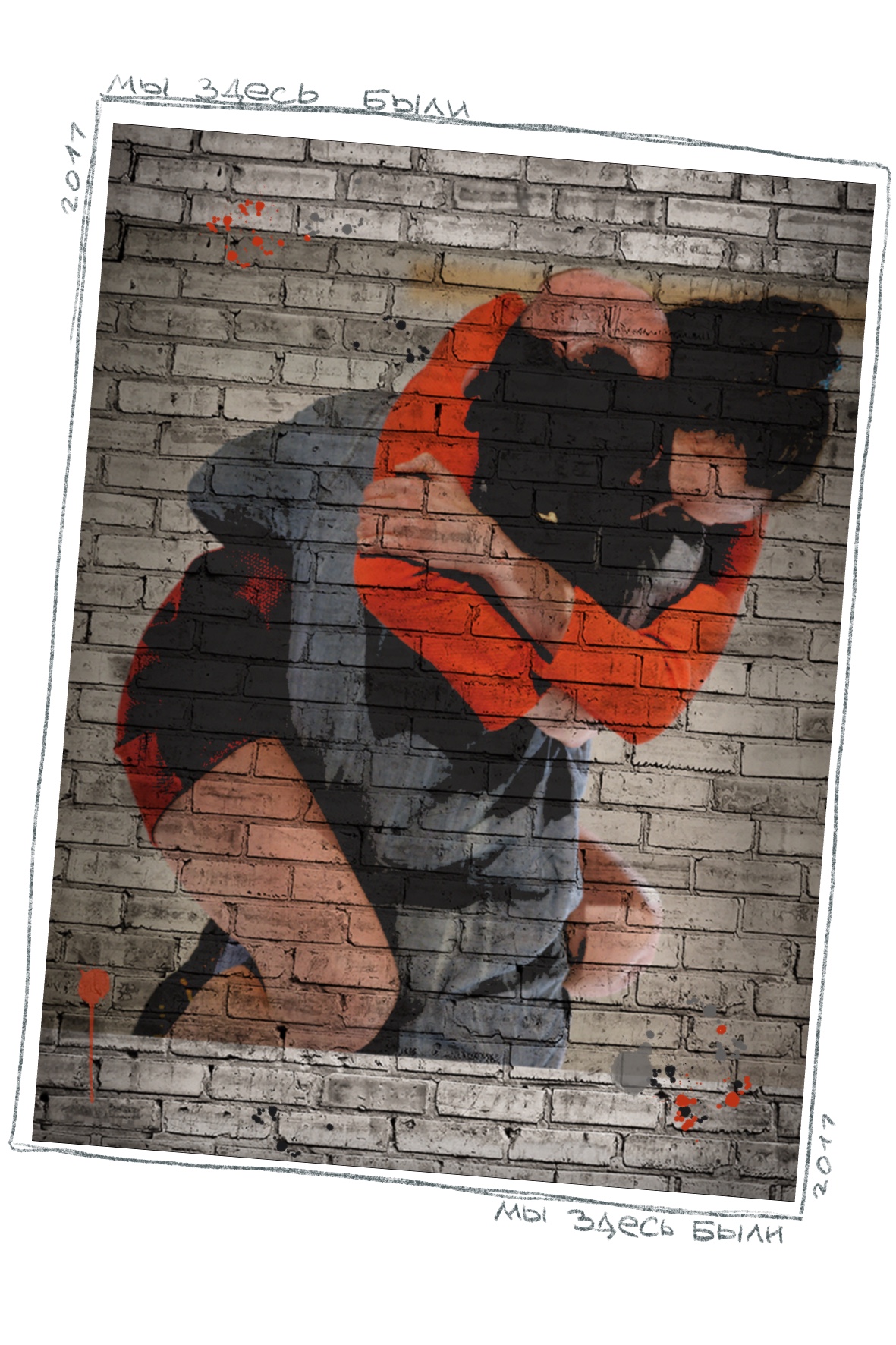
performative play
2018
Po.V.S.Tanze & New Oslo Losers Trio (Inner Norway)
SECT
Po.V.S.Tanze & New Oslo Losers Trio (Inner Norway)
SECT
Dance: Alexandra Konnikova and Alberts Alberts.
Music: Richardas Norvila.
Light design: Evgeniya Kaufman.
Set design: Vadim Koptievsky.
Thank you to Moscow Yoga School and Ivan Tenerov personally.
The act consists of 15 epizodes: 8 musical pieces and 7 dances.
Together with Richardas we continue to explore the extent of inter independence in the dialogue between music and dance. In Sect music and dance do not happen at the same time but are unexpectedly and deeply connected. Sect emerged out of desire to share inner silence while listening to music and particular state of dance seeking clarity of the music structure.
Music: Richardas Norvila.
Light design: Evgeniya Kaufman.
Set design: Vadim Koptievsky.
Thank you to Moscow Yoga School and Ivan Tenerov personally.
The act consists of 15 epizodes: 8 musical pieces and 7 dances.
Together with Richardas we continue to explore the extent of inter independence in the dialogue between music and dance. In Sect music and dance do not happen at the same time but are unexpectedly and deeply connected. Sect emerged out of desire to share inner silence while listening to music and particular state of dance seeking clarity of the music structure.
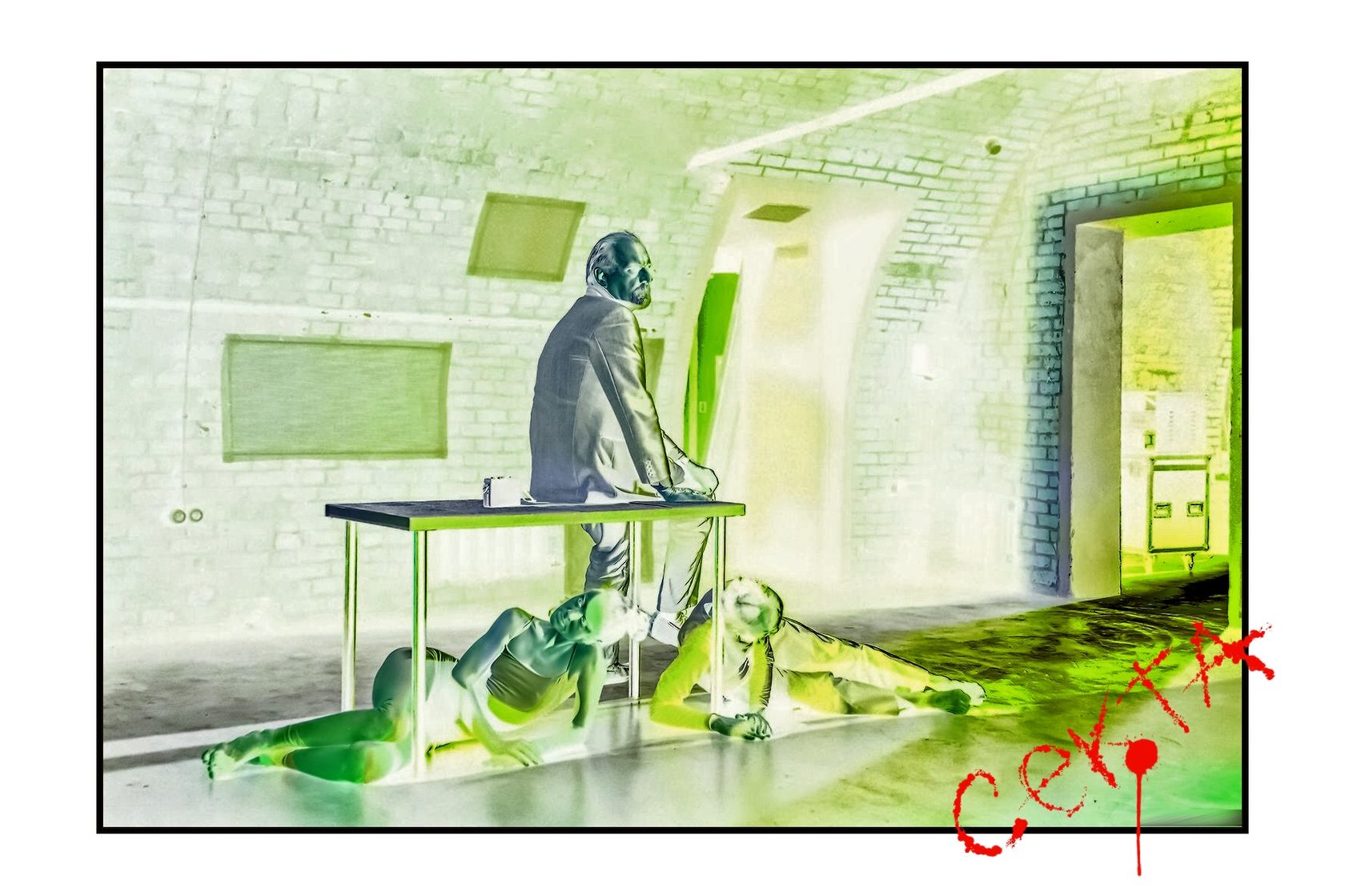
Performance-concert


